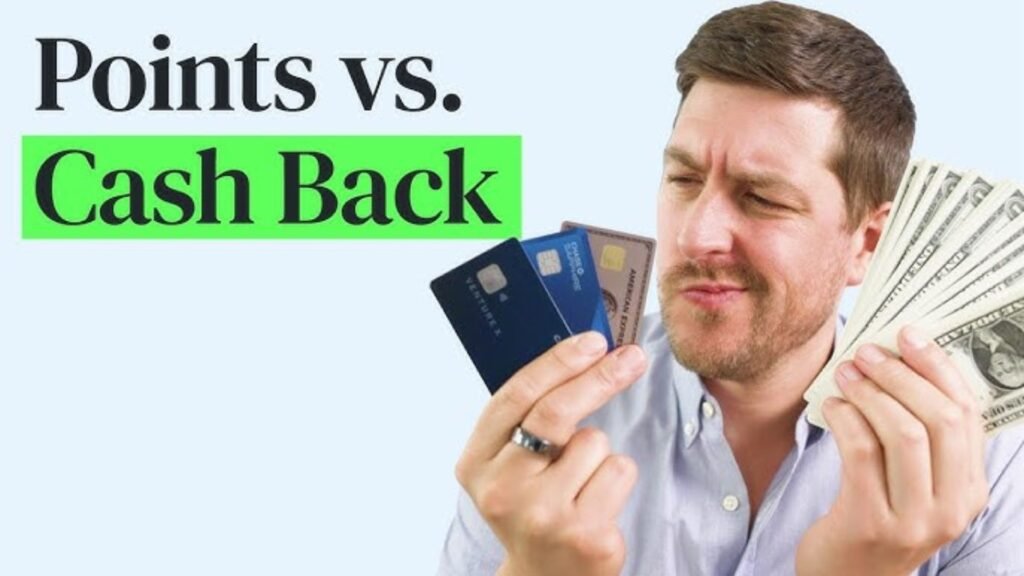Cashback credit cards are like a loyal mate who slips a few bucks back into your wallet every time you spend. Unlike rewards points, which can be confusing to redeem, cashback is straightforward: you spend, you earn cold, hard cash (or statement credits). In Australia, where the cost of living can pinch, this extra cash can add up fast—think $200-$600 annually, depending on your spending habits. According to Money.com.au, cashback cards often offer one-off bonuses or ongoing rewards, making them a top pick for savvy Aussies.
But here’s the kicker: not all cashback cards are created equal. Some come with high annual fees or sneaky terms that eat into your rewards. That’s where our simple trick comes in—choosing the right pair of cards to double your cashback potential without the hassle.
The Simple Trick: Pair a Sign-Up Bonus Card with an Ongoing Rewards Card
Here’s the strategy in a nutshell: apply for two complementary cashback credit cards—one with a juicy sign-up bonus and another with strong ongoing rewards. By combining these, you can score an upfront cash injection (often $200-$500) and keep earning cashback on every purchase. This approach maximizes your rewards while keeping things simple. Let’s break it down.
Step 1: Snag a Sign-Up Bonus Card
Sign-up bonus cards are designed to lure you in with a one-time cashback offer, often requiring you to meet a minimum spend within the first few months. For example, the ANZ Rewards Black card offers $150 cashback when you spend $3,000 in the first three months. Sounds doable for regular expenses like groceries, bills, or fuel, right?
Pro Tip: Always check the eligibility criteria. Most bonuses require you to be a new cardholder and meet a minimum spend, but don’t overspend just to hit the target—it defeats the purpose!
Step 2: Pair It with an Ongoing Rewards Card
Once you’ve pocketed the sign-up bonus, switch your everyday spending to a card with solid ongoing cashback rates. Cards like the Citi Rewards Card offer 1% cashback on eligible transactions up to $10,000 per statement period. If you’re spending $2,000 a month on essentials, that’s $20 back in your pocket—month after month.
By using both cards strategically, you’re essentially double-dipping: a big upfront win plus steady rewards over time. It’s like getting a signing bonus and a steady paycheck!
Why Two Cards? The Power of Diversification
You might be wondering, “Why not just get one card?” Great question! Using two cards lets you cover more spending categories and avoid caps on rewards. For instance, some cards offer higher cashback rates on specific categories like dining or groceries, while others are better for general purchases. Pairing them ensures you’re always earning the maximum possible.
Take Sarah, a Sydney-based graphic designer. She applied for a card with a $300 sign-up bonus to cover her new laptop purchase. Then, she switched to a card offering 2% cashback on online shopping, her biggest expense category. By the end of the year, she’d earned $450 in cashback—enough for a weekend getaway to the Blue Mountains!
How to Choose the Right Cashback Credit Cards
Not all cashback cards are worth your time. Here’s how to pick the best ones for your lifestyle, backed by expert tips and real-world insights.
Look for Low or No Annual Fees
High annual fees can wipe out your cashback gains. For example, the Mashreq Cashback Credit Card in the UAE offers 5% cashback on dining with no annual fee—a rare gem. In Australia, look for cards like the Coles No Annual Fee Mastercard, which offers rewards without the yearly cost.
Check Cashback Rates and Caps
Cashback rates typically range from 1-5%, but many cards cap how much you can earn. The FAB Cashback Credit Card, for instance, caps cashback at $200 per category (dining, groceries, fashion). Always read the fine print to ensure the card aligns with your spending habits.
Match the Card to Your Spending
Do you spend big on groceries, travel, or online shopping? Choose cards that reward your top categories. For example, the HSBC Live+ Credit Card offers 8% cashback on dining, shopping, and entertainment—perfect for foodies or frequent travelers.
Understand Redemption Options
Some cards credit cashback directly to your account, while others require you to redeem points manually. The SBI Cashback Card, for example, auto-credits cashback within two days of your statement, making it hassle-free.
Top Cashback Credit Cards in Australia for 2025
To make things easier, here’s a table comparing two top cashback credit cards that pair perfectly for our trick:
| Card Name | Sign-Up Bonus | Ongoing Cashback Rate | Annual Fee | Best For |
|---|---|---|---|---|
| ANZ Rewards Black | $150 cashback ($3,000 spend in 3 months) | 2 points/$1 (up to $5,000) | $375 | Sign-up bonus seekers |
| Citi Rewards Card | None | 1% on eligible transactions | $149 | Everyday spending |
Note: Always check terms and conditions for eligibility, minimum spend, and exclusions.
How to Apply for Two Cards Without Hurting Your Credit
Applying for two credit cards at once can raise red flags for lenders if not done carefully. Here’s how to do it right:
- Check Your Credit Score First: Use a free service like Credit Savvy to ensure your score is healthy (above 600 is ideal). Multiple applications in a short period can temporarily lower your score.
- Space Out Applications: Apply for the sign-up bonus card first, then wait 3-6 months before applying for the second card. This shows lenders you’re managing credit responsibly.
- Pay Off Balances Monthly: To avoid high interest rates (often 20%+), pay your balance in full each month. Sarah, our Sydney designer, set up auto-payments to ensure she never missed a due date.
- Read the Fine Print: Some cards exclude certain transactions (e.g., utility bills or government payments) from cashback. The SBI Cashback Card, for instance, doesn’t offer cashback on utilities or insurance.
Common Mistakes to Avoid
Even the best-laid plans can go awry. Here are pitfalls to steer clear of:
- Overspending to Chase Bonuses: Spending $3,000 to get a $150 bonus isn’t worth it if you’re buying things you don’t need.
- Ignoring Annual Fees: A $375 annual fee (like on the ANZ Rewards Black) can eat into your rewards if your spending is low.
- Missing Payments: Late payments trigger hefty interest rates (up to 23.95% p.a. on some cards) and can ding your credit score.
- Not Comparing Cards: Don’t settle for the first card you see. Use comparison sites like Money.com.au to find the best fit.
Expert Insights: What Financial Gurus Say
Financial expert Queenie Tan, an authorized representative of Money Sherpa, emphasizes the importance of matching cards to your lifestyle. “Cashback is great, but it’s only valuable if you’re not paying high interest or fees,” she says. “Always pay off your balance and compare cards to ensure you’re getting the best deal.”
Martin Lewis, founder of MoneySavingExpert, adds, “Rewards are never free. The cost is often covered by higher interest rates or fees, so do the math to ensure the card is worth it.”
Real-Life Success Story: Meet Tom from Brisbane
Tom, a 32-year-old IT consultant, used our trick to maximize his cashback. He applied for a card with a $400 sign-up bonus, using it for his regular expenses like rent and groceries. After meeting the minimum spend, he switched to a card offering 2% cashback on fuel and dining—his biggest expenses. By the end of 2024, Tom had earned $650 in cashback, which he used to fund a trip to the Great Barrier Reef. “It was like getting paid to spend!” he says.
SEO Tips to Find the Best Cards
Want to find the best cashback cards yourself? Use these SEO-friendly search tips:
- Search Specific Terms: Try “best cashback credit cards Australia 2025” or “no annual fee cashback cards” to narrow down options.
- Check Comparison Sites: Sites like CreditCardCompare.com.au and ProductReview.com.au offer user reviews and detailed comparisons.
- Look for Recent Articles: Blogs like MoneySavingExpert or Invest with Queenie often update their lists with the latest offers.
FAQs for Featured Snippets
What is the best cashback credit card in Australia?
The best card depends on your spending habits, but the ANZ Rewards Black offers a $150 sign-up bonus, while the Citi Rewards Card provides 1% ongoing cashback.
How do I maximize cashback rewards?
Pair a sign-up bonus card with an ongoing rewards card, pay off your balance monthly, and choose cards that match your spending categories.
Are cashback cards worth it?
Yes, if you pay off your balance in full and choose low-fee cards. They can yield $200-$600 annually, but high fees or interest can negate benefits.
Final Thoughts: Start Earning Cashback Today!
Landing two Aussie credit cards with this simple trick—pairing a sign-up bonus card with an ongoing rewards card—can put hundreds of dollars back in your pocket. Whether you’re saving for a holiday, a new gadget, or just some extra coffee money, cashback cards make your spending work harder. Just remember to choose cards that fit your lifestyle, avoid overspending, and always read the fine print.
Ready to turn your key clicks into cashback? Start comparing cards today, and you could be earning rewards by next week. Happy spending—and saving!



